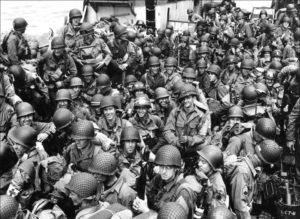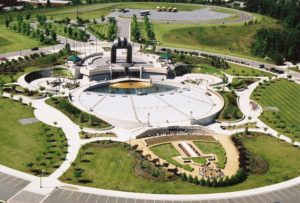Honoring D-Day Around Our Country
 Did you know D-Day was the largest Naval, Air and Land operation in history? Over 160,000 troops, 13,000 aircrafts, and 5,000 ships stormed the beaches of Normandy, France on June 6, 1944.
Did you know D-Day was the largest Naval, Air and Land operation in history? Over 160,000 troops, 13,000 aircrafts, and 5,000 ships stormed the beaches of Normandy, France on June 6, 1944.
The observance of D-Day in our country is a day of remembrance of the brave soldiers who fought to liberate northwestern Europe from Nazi occupation and bring an end to WWII in Europe.
Although this isn’t a national holiday, there are many special ways people celebrate and remember this day around our country, like paying a visit to museums and memorials erected in D-Day’s honor.

The WWII Museum in New Orleans has an interactive experience for the observance of this day. The museum begins the observance of D-Day as early as 6:30 a.m. which is significant because that is the approximate time D-Day began historically. Readings take place of General Dwight D. Eisenhower’s Order of the Day message to troops followed by film screenings, lectures, and a performance by the US Marine Corps Forces Reserve Band. A Commemoration Ceremony occurs in the afternoon which welcomes WWII veterans as part of the ceremony. Encompassing an interactive experience, WWII reenactors interact with Museum visitors. Visitors are even welcomed aboard the Higgins Boat with USS Alabama living history reenactors to learn about the New Orleans-built craft’s role in the D-Day invasion.
 You can also visit the D-Day Memorial in Bedford, Virginia. Dedicated on June 6, 2001 by president George W. Bush, the National D-Day Memorial was constructed in honor of those who died that day, fighting in one of the most significant battles in our nation’s history. The grounds of the memorial take visitors on a journey of the events and politics during the D-Day time period. Surrounding the forty-four foot tall arch are the plaques with the 4,413 names of the Allied soldiers who died during the invasion. There are multiple programs for veterans and visitors to take part in, including the D-Day Participant Identification Program. This program strives to collect the names of those who participated in D-Day but passed away after June 6 and before the end of the war, those who died since the end of the war, and those who are still living.
You can also visit the D-Day Memorial in Bedford, Virginia. Dedicated on June 6, 2001 by president George W. Bush, the National D-Day Memorial was constructed in honor of those who died that day, fighting in one of the most significant battles in our nation’s history. The grounds of the memorial take visitors on a journey of the events and politics during the D-Day time period. Surrounding the forty-four foot tall arch are the plaques with the 4,413 names of the Allied soldiers who died during the invasion. There are multiple programs for veterans and visitors to take part in, including the D-Day Participant Identification Program. This program strives to collect the names of those who participated in D-Day but passed away after June 6 and before the end of the war, those who died since the end of the war, and those who are still living.
